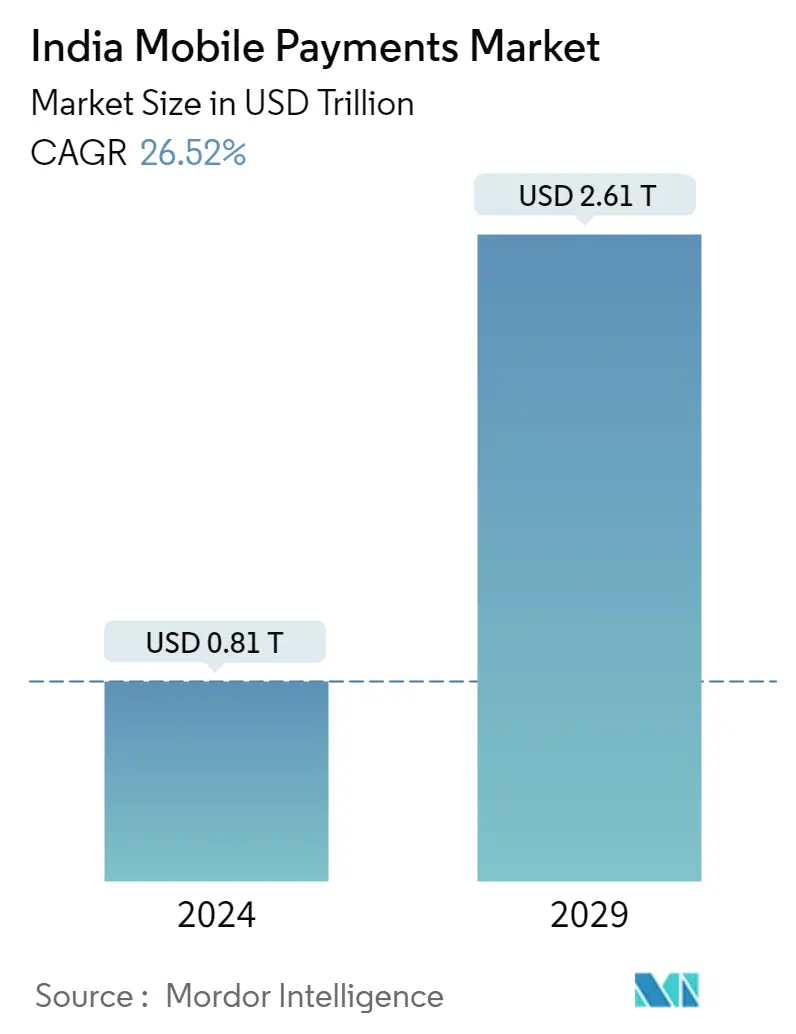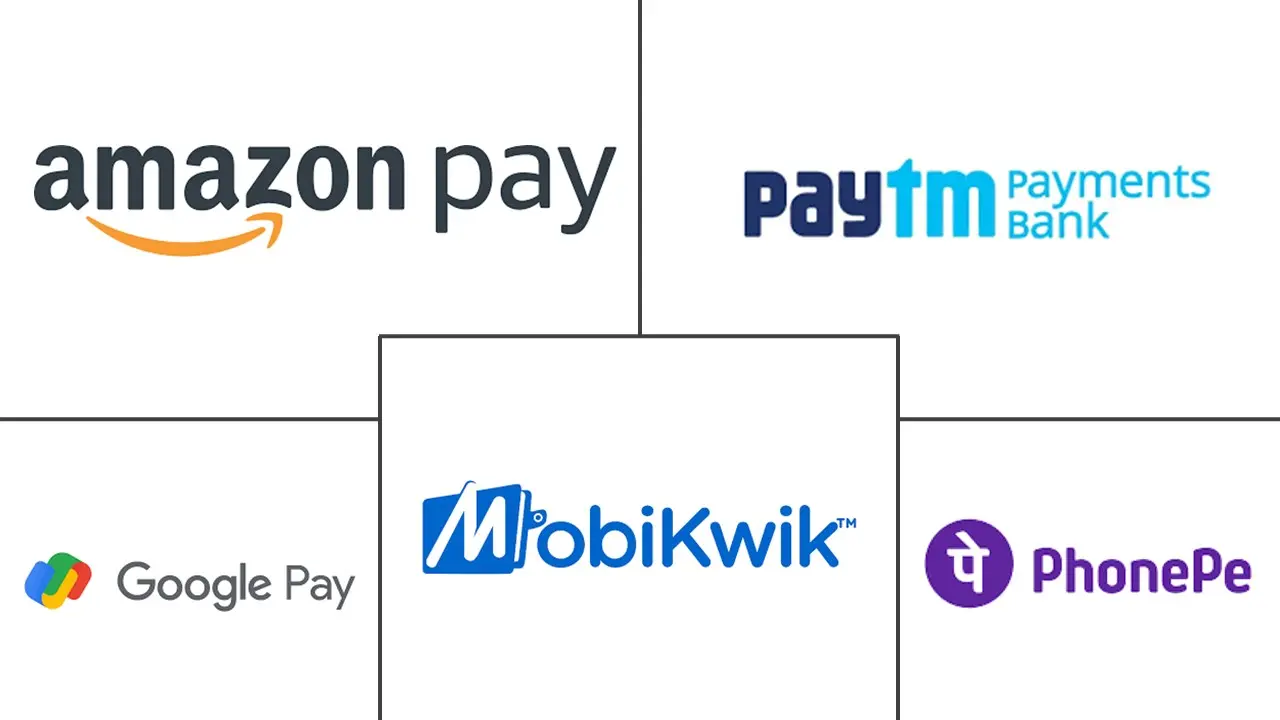Market Size of India Mobile Payments Industry

| Study Period | 2019 - 2029 |
| Base Year For Estimation | 2023 |
| Market Size (2024) | USD 0.81 Trillion |
| Market Size (2029) | USD 2.61 Trillion |
| CAGR (2024 - 2029) | 26.52 % |
| Market Concentration | Medium |
Major Players
*Disclaimer: Major Players sorted in no particular order |
Need a report that reflects how COVID-19 has impacted this market and its growth?
India Mobile Payments Market Analysis
The India Mobile Payments Market size is estimated at USD 0.81 trillion in 2024, and is expected to reach USD 2.61 trillion by 2029, growing at a CAGR of 26.52% during the forecast period (2024-2029).
- The expanding e-commerce business and the increased prevalence of smartphones nationwide can be linked to market growth. The growing internet use for online shopping will likely drive market expansion throughout the forecast period. Businesses nationwide are making their payment methods mobile-friendly, resulting in market growth potential.
- According to Worldline, with merchant adoption of UPI rising rapidly in India, the average ticket size of UPI P2M (person to merchant) transactions is steadily increasing, while ATS for P2P (person to person) transactions is decreasing. However, this is due to the volume of transactions as well as a shift to P2M transactions. P2M transactions UPI transactions have risen to 57.5 percent in June 2023 from 40.3 percent in January 2022 and are expected to keep growing, of complete UPI transactions.
- Further, through its policy statement "Regulation and Supervision of PFMIS Regulated by RBI," the RBI has approved the PFMIS published jointly by the Committee on Payments and Market Infrastructures (CPMI) and the International Organization of Securities Commissions. As a result, all RBI-authorized payment systems designated as systemically important payment systems/system comprehensive vital payment systems, as well as Securities Settlement Systems, ccps, Central Securities Depositories, and Trade Repositories, are required to adhere to the PFMI standards. The RBI-owned and operated RTGS and NEFT systems must be evaluated and published regularly in accordance with the PFMI criteria.
- Web 3.0 is the third generation of web technology, focusing on integrating structured data and intelligent services for the web to comprehend and fulfill user goals. In the area of payments, Web 3.0 can be leveraged to provide users with more intelligent and tailored payment experiences. Web 3.0 technology, for example, can be leveraged to enable users to make payments using natural language processing (NLP) and voice commands, allowing them to tell their devices what and how much they intend to pay.
- The adoption of digital payments was increasing before the commencement of the COVID pandemic. Still, Reserve Bank actions and the additional thrust supplied by the pandemic have hastened the change, resulting in a substantial increase in contactless and online payments. Effective digital payments strategy and operations are critical for all organizations that rely on or participate in the payments ecosystem. Because of the contactless nature of digital modes offered by modern technologies and legislative flexibility, crores of Indians can practice social distancing when making payments. Another noteworthy trend is the adoption of digital payments by small firms. Data reveals a more than 500% growth in retailers taking digital payments over the last two years.
- Additionally, cross-border trade increases in India as companies across industries adopt global trade. However, the complexities of cross-border commerce have hampered the market's growth. As most cross-border transactions are handled through correspondent banking relationships, increasing operational costs and trade volumes further accelerate the adoption of other payment methods, such as digital and mobile payment systems. The increase in international trade, internationalization of production, and cross-border e-commerce suggest that demand for digital cross-border payments will continue to grow in the region. However, digital payments from one country to another are costlier, slower, and less transparent than domestic payments due to the complexity involved in the procedure.
